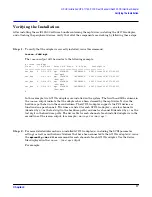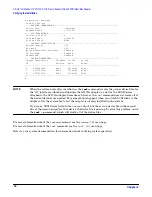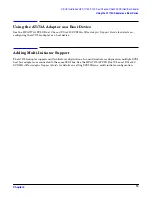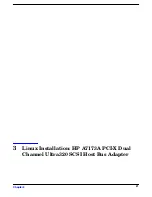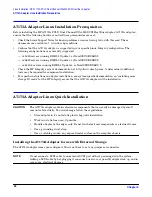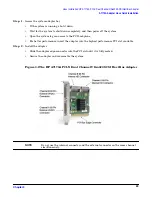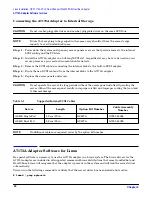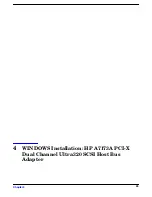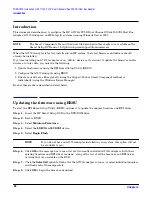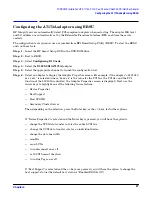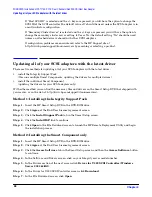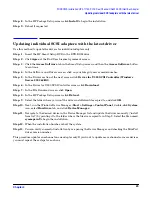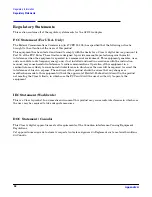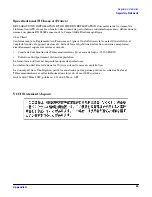
Chapter 2
HP-UX Installation: HP A7173A PCI-X Dual Channel Ultra320 SCSI Host Bus Adapter
Verifying the Installation
18
# mptconfig /dev/mpt8
Scan For Devices ...
---- ADAPTER INFORMATION -----------------------------------------------------
Device File
: /dev/mpt8
Hardware Path
: 1/0/4/0/0
---- BUS PARAMETERS ----------------------------------------------------------
Initiator SCSI ID : 5
SCSI Bus Rate : Ultra320
SCSI Bus Width : Wide
---- CHANNEL CAPABILITIES ----------------------------------------------------
Req/Ack Offset : 127
Bus Mode : LVD
Quick Arbitration Selection : Enabled
DT Clocking : Enabled
Packetized : Enabled
---- TARGET PARAMETERS -------------------------------------------------------
Target Description
Firmware In Use In Use
Id
Version Rate Width
------------------------------------------------------------------------------
0 ST318453LC HPC3 Ultra320 Wide
2 ST373453LC HPC3 Ultra320 Wide
4 ST373453LC HPC4 Ultra320 Wide
------------------------------------------------------------------------------
#
NOTE
When the system boots after installation, the
insf
command creates the proper device files for
the “ctl” interfaces (which would include the A7173A adapter) as well as the SCSI devices
attached to the A7173A adapter. Sometimes, however, the
insf
command does not create all of
the device files that are needed. For example, this happens when you attach SCSI disks to the
adapter after the system boots, but the adapter is already installed in the system.
If you see a SCSI device listed in the
ioscan
output, but there is no device file in the second
line of the ioscsan output for that device, the device file is missing. To solve this problem, issue
the
insf -e
command, which will create
all
of the device files.
For more information about the
ioscan
command, see the
ioscan(1M)
man page.
For more information about the
insf
command, see the
insf (1M)
man page.
Refer to your system documentation for information about verifying system operation.














